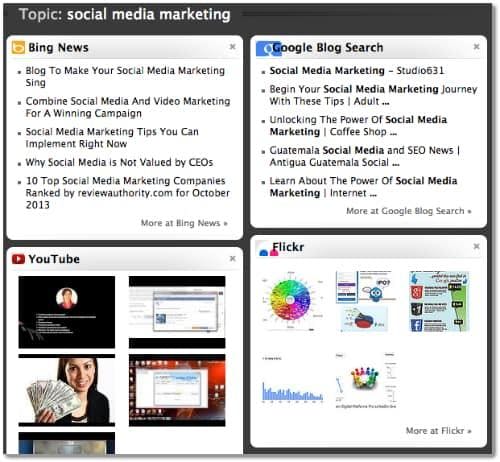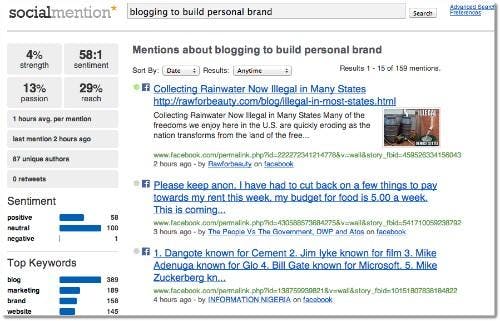Making a good online impression is a critical component in branding your business.While social media is an excellent tool to promote current marketing campaigns, build rapport and establish credibility, a blog has the power to position you as a subject matter expert and an authority within your field.As nearly 80% of all shoppers look to the Internet to research a product prior to making a purchase, it is easy to see how blogging done right can be a powerful tool.From search engine optimization to social media optimization and the consistent use of quality content, blogging can impact your business in a very positive way.
A blog can:
- Create thought leadership and position you as a subject matter expert
- Build trust, authority and meaningful relationships with readers and subscribers
- Extend your message and branding beyond traditional marketing methods
- Connect you with potential clients looking to the web for a specific product, service or solution to whatever ails them
- Keep you relevant and top of mind
- Create differentiation among competition
Ready to leverage blogging to build business identity, authority and credibility? These six tips will help you get started.
Leverage Blogging to Build Business Identity, Authority and Credibility
1. Post with Purpose
Your first step towards creating a blog worth visiting is posting fresh and unique content. If you are eager to gain loyal blog subscribers, and what blogger isn’t, then you must provide a solid enough reason to keep them coming back for more.Before you haphazardly begin creating content, sit down and ask yourself a few questions.
- Who is your target audience?
- What type of content are they looking for?
- What need are you able to fill or what problems can you solve through your blog?
- What is your purpose? e.g. exposure, income, thought leadership.
- What is your time commitment?
- Do you envision blogging long-term?
- What is your budget
Your blog can generate interest and produce results if you know what the purpose is before you begin. Just as with any other endeavor, having an end goal in mind and then a road map on how you will get there will make it easier to benchmark successes as they come.
Tool Tip: Create an Editorial Calendar
Hubspot has an excellent editorial calendar that you can download for free. You can also find additional resources on my post Creating and Managing an Editorial Calendar.

Not familiar with how an editorial calendar works? Get started with these information articles:How to Get Organized with an Editorial Calendar – it’s Easier than you Think! via Peg FitzpatrickHow to Create an Editorial Calendar with Your Blog via Ian Cleary
2. Post Consistently
Posting consistently lends credibility to your blog. Plan on writing two content rich posts per week. These do not need to be long, but they do need to be frequent. Pick the days and times you will post to keep you focused on a deadline and your readers accustomed to looking for your content.However, I do want to qualify my above recommendation. If your answer to the time commitment question precludes you from posting twice per week, this is not a deal killer.Always remember, put quality above quantity. If you can only post once per week, but it is quality work, your readers will appreciate it and you will benefit from their ongoing loyalty.Once you begin to post consistently, make sure you share it consistently across your social media networks.
Tool Tip: Use Buffer to Post Consistently to Social Networks

3. Provide Valuable Information
Understand your niche or target market and offer specifics around that topic. Take frequently asked questions and answer them with a detailed response that anyone would find valuable. Provide tips, offer items of value, or share details about issues surrounding your industry.Share your knowledge and expertise by giving readers and subscribers the content they really want. Make your blog a destination and one they cannot live without.
A word of caution: Building trust will not happen overnight.
It will take a commitment to consistency and a willingness to give freely of your insight, wisdom and knowledge without anticipating anything in return. This gives readers the opportunity to see that you are in it for them, not just the paycheck.In order to stay relevant, you need to factor in time spent researching your consumer. What are they talking about, what are they worried about and what are they unhappy about when they discuss your industry or even your competitors.
Tool Tip: Research Your Consumer Needs
Use a site like Addictomatic to see what others are talking about within your niche or industry. Educate yourself on what is happening in real-time across the web and then take that knowledge and translate it into content for your target market.Addictomatic searches multiple sites at once looking for the top mentions, retweets and blog posts being shared around your specified keyword. Add your search topic. run a search of YouTube, Bing, Flickr, Delicious and more. Then rinse and repeat!

4. Speak Directly to Your Target Market
Show your readers how much you care by researching who they are and what it is that matters most to them. Do not assume that just because you have been in your industry for a substantial amount of time that you automatically know what they are looking for. Times change and industries evolve, so make sure to stay on top of yours.Ask questions, listen to the answers and study your analytics. It is very easy to see through Google Analytics where your readers came from, what keywords they used to end up on your page and how long they stuck around.This is precisely why it is vital to know what your goal is before you begin to blog and then speak directly to the needs of your readers, adjusting that message as necessary to encourage readership growth.
Tool Tip: Know Your Niche
Social Mention is a nifty tool with a ton of functionality. Dissect, analyze and research content based on keyword, phrase or Twitter handle.Begin by taking a look at your industry specific keywords and then drill down into the blogs, tweets and posts that pull up in the stream of most recent content shared.

5. Love What You Do and Let It Show
If you love what you do then it should be reflected in everything you say and write. Be excited about what you have to offer and why working with you would be a benefit.Consumers sense desperation so always remember to keep your posts upbeat, positive and informative without getting bogged down by dreary details.Is your industry going through hard times, has your business hit a slow patch or are you angry with a competitor? Nix the desire to share every last detail and instead choose to be a beacon of positivity. As the saying goes, "You can catch more flies with honey than with vinegar."
6. Join in the Conversation
The single most effective way to build loyalty and trust is through conversation. A blog allows readers to get to know you on a very intimate level. If you let comments sit without responding or even acknowledging them, you are giving away a valuable opportunity.You not only have the chance to answer their question in a public forum but you allow your readers to see that you care about their needs and are there to assist when they are ready.
Tool Tip: Use a Third-Party Management Tool
To stay consistently in the conversation, consider using a tool like Hootsuite to schedule your content. You can choose a specific time to post to various social networks or choose specific times with Hootsuite's auto-schedule feature and then post at custom times throughout the day.

How are you using your blog to build business buzz? I'd love to hear your success stories in the comments below!
About Rebekah Radice
Rebekah Radice, co-founder of BRIL.LA, has traded narcissism for purpose. When not driving growth, you'll find her tricking family into thinking she's Emeril Lagasse - likely covered in marinara. The spotlight was fun, but impact is better. These days she's using 20+ years of brand brilliance for good.
